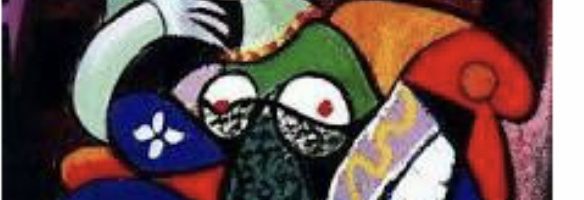Mist. Mist outside my window...
Read More
I’m a very focused person…


Mist. Mist outside my window...
Read More

When I think back on my professional life, I’m amazed and humbled by how I could concentrate on complex and intricate tasks that I couldn’t imagine doing now. I could laser focus and often have music or even talk radio in the background, for an hour at a time.
My current clients pay me to focus, which is a real incentive, and when I despair of my diminishing attention span, I think about the nice people (really) at one of my clients. They are millennials or Gen-Zers, and there is a lot of TLDR going on. The problem is, their business requires a lot of detailed technical information for reference. I review their marketing documents, and often I’m the only one who reads them word-for-word. They often thank me for such a “thorough reading” and wonder how I can do it.
However, sometimes my attention span runs out of steam, and in other parts of my life, my focus dims. Once I remember to get bills paid, etc, and there is leisure time, I find I can read a book for only 15 minutes or so, often mimicking the fragments of time the other tasks take. Now that I am taking on more caregiving responsibilities, being “interrupted” is often a factor as well. “Where is my … can you find my …”
And oops, my mother is coming in 10 minutes (for real as I write this), so are we set up for the family Zoom, and did I take out the chicken for lunch? Off to the next time fragment …

Distracted
I’m a big reader – or at least I was. (See Book Slut, or Why I’m in Six Book Clubs)
Actually a therapist once questioned whether I had an attention deficit because I told him I was easily distracted. – I invariably forget pots on the stove, and my son is not the only one in the family who’s forgotten to turn off the taps when drawing a bath. (See Tracing Our Roots)
And, I confessed to the therapist, I often make half the bed and then remember something else that needs doing, or I leave the dishwasher half loaded when distracted by another task.
Then he asked if I had trouble finishing a book, and I said no, and there went his neat ADHD diagnosis.
But since Covid I don’t seem to have the same concentration or sitzfleisch I had, and I’m surely reading much less. But then again I think I’m writing much more.
So thanks for small blessings, and thanks Retrospect!
– Dana Susan Lehrman
My mother prepared dinner every night for my dad, my brother and me. Meat, potatoes, Birds Eye frozen vegetables. Once in a while a fresh salad. But in those days, fresh vegetables, especially in the winter, were hard to come by. I can still see my mom with her white and red flowered apron tied around her waist, bustling around the kitchen, getting everything ready so she could run to the train station to pick up my father.
He came home from the city (New York) on the 6:18 LIRR train. The three of us sat in the car at the Roslyn station and watched the passengers (mostly men) disembark, looking for the tall, handsome man in his brown Brooks Brothers overcoat and matching fedora that was my father. When he saw us, my mother got out of the car and moved to the passenger seat so he could drive. My brother and I sat quietly in the back seat waiting to see what would unfold. If dad had been in the Bar Car with his buddies, his voice had a gruff cadence than made me nervous. I often got a stomach ache before dinner.
We sat in a dining booth in the kitchen of our Levitt house. I picked at my food because it hurt to eat it. My dad would yell at me to eat. “Your mom slaved over this for you and your brother,” he’d say. Or something like that. “Eat it!” Sometimes he’d ask me to go find the Tabasco Sauce for him, something he put on everything he ate before he even tasted it. If I couldn’t find it, he’d say I couldn’t find my head if it wasn’t attached to my shoulders. Often, I got up from the table and ran into my room, slammed the door and cried in my pillow, wishing he were dead.
On rare occasions, when things had gone well at work and he hadn’t had too much to drink on the train, he’d bring home petit fours from Horn and Hardart’s or delicious donuts from Mary Elizabeth’s. And on the weekends he’d go to the bakery and deli after his tennis game and bring home bagels and lox and cream cheese. On weekends he made up for all his bad behavior during the week, and I made up for all the meals I didn’t eat during he week.
Needless to say, family dinners have not been a high point of my adult years. Although when I was first married to my first husband and he was an intern at a hospital here in Oakland, on 36 hour shifts, I tried. I would get up at 5 in the morning and prepare a gourmet meal that we shared before he disappeared for all those hours. Then I would bring him dinner in the doctor’s lounge when they gave him a half hour break in the evening. But I didn’t really like cooking, and he didn’t really like Western medicine, and we didn’t really like being married. So you can see where this was headed.
To this day, I do like bagels and lox, though. And I’m very good at preparing it!